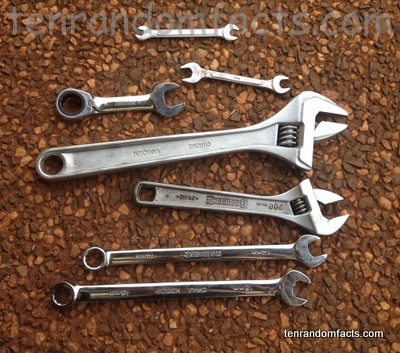Tighten your brain with these wrench facts.
- Wrenches are gripping tools used to tighten or loosen objects by rotating them, particularly nuts and bolts.
- ‘Wrench’, the typical American term, is also known as a ‘spanner’, especially in British English or a ‘spanner wrench’.
- Wrenches have a long history and have been used for various purposes including the straightening of spear shafts and similar, and the term was used before 1790, while the word ‘spanner’ has been used from as early as 1630.
- Special alloy steel is typically used to make high quality wrenches and are typically plated with chrome for corrosion prevention.
- The first patent of a wrench is commonly attributed to Solymon Merrick in the United States in 1834, however, an earlier patent of a similar one was granted in 1832 to Henry King from Springfield, Massachusetts, in the United States, and King’s wrench was an ‘improvement in the rack wrench’.
- Wrenches commonly have an end with either a c or u shaped opening and/or a notched hole, which is used to grip the nut or bolt.
- Popular wrenches include box-end, combination, open-end, flare nut and adjustable, with the latter having a movable clamp.
- Wrenches can cause injury, particularly by slipping, if used incorrectly such as by using on a incorrect angle or a different nut size.
- Wrenches come in a range of sizes that have the size usually stamped on the tool, with imperial tools numbered in fractions of inches and metric tools in millimetres.
- Wrenches with nut-shaped sockets can have 6, 8, 12 or 16 sided holes for gripping.
Bibliography:
Crawford P, Spanner Jaw Sizes, 2013, Dundee Satellite Receiving Station, http://www.sat.dundee.ac.uk/~psc/spanner_jaw.html
Wrench, 2014, Encyclopaedia Britannica, http://www.britannica.com/EBchecked/topic/649432/wrench
Wrench, 2014, Wikipedia, http://en.wikipedia.org/wiki/Wrench








